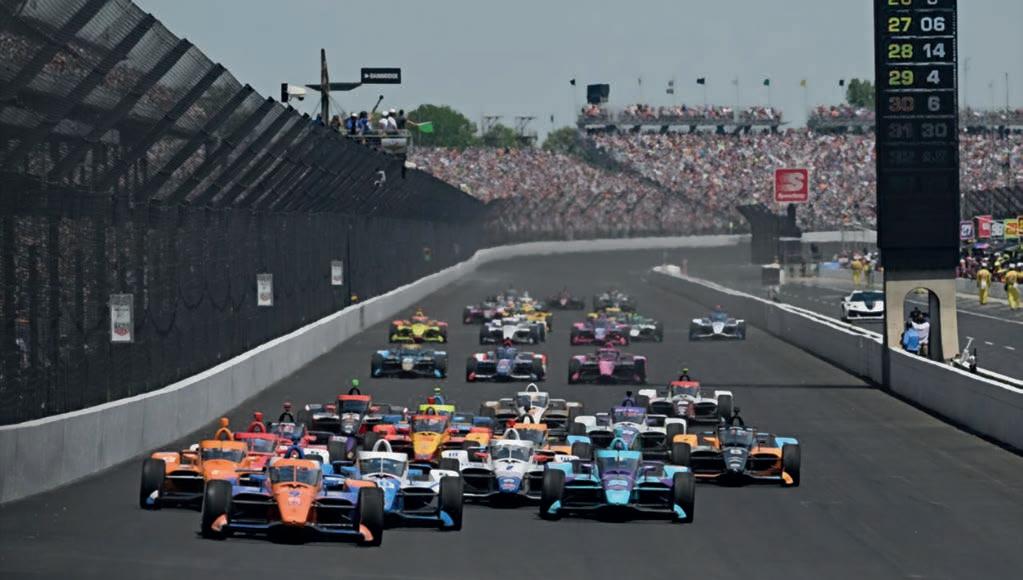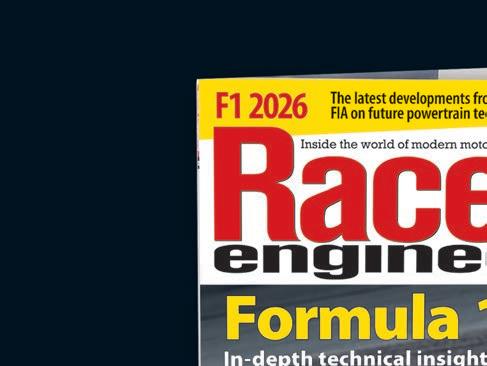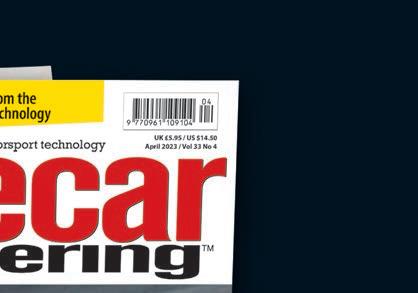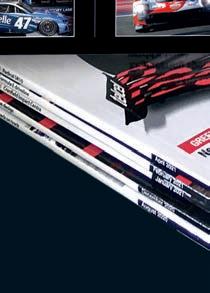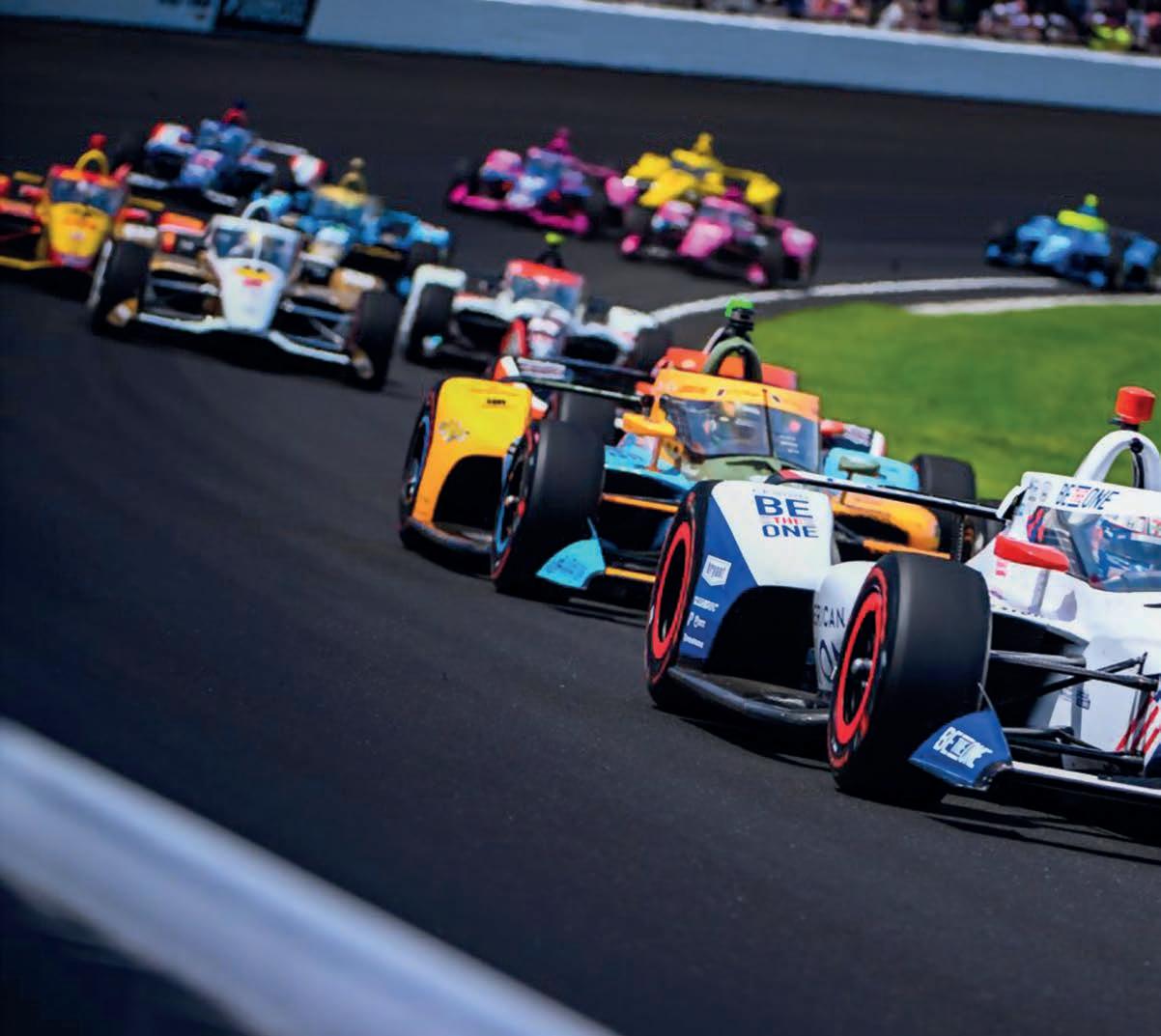
15 minute read
Simulating environment
How ‘America’s Formula 1’ has embraced simulation and developed into a world-class technology platform
By JAHEE CAMPBELLBRENNAN
IndyCar is sometimes referred to as America’s Formula 1. It is fast, openwheel, open-cockpit and high-downforce racing, driven by underbody aero and front and rear wings. It races with a familiar format, but is a very different championship, with an equally exciting journey.
In the late 1990s, the series raced under CART using Champ Cars. This was a relatively prosperous period for open-wheel racing in North America, with lots of sponsorship available and high viewing numbers.
Technological development in that period was fast, using cutting edge wind tunnels, shaker rigs and all the other R&D techniques you might expect from top-level racing.
Towards the end of the ’90s, however, the Indy Racing League (IRL) broke off from CART and two separate racing championships were formed. Viewing numbers plummeted, presumably confused by what was going on, and with them went the sponsorship money.
At this point, the championship also moved from a multi-manufacturer series with many different chassis and engine builders, and relatively open regulations, to effectively a single-make series. This meant there was less reason to spend money on development, and innovation subsequently stagnated. In a short period of time, the series went from a position rivalling F1 to falling noticeably behind, with its reputation following.
In recent times, though, IndyCar has re-surfaced and is once again being held up as one of America’s premier racing series, with a very healthy fan base, lots of commercial investment opportunity and strong manufacturer involvement.
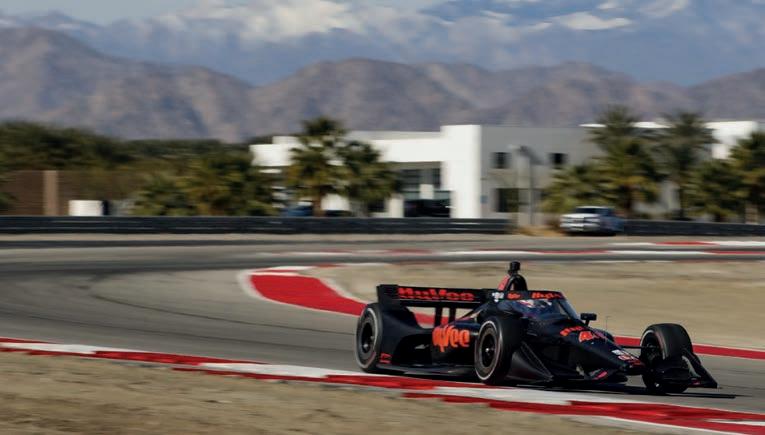
With a major regulation change coming in next year through the introduction of a hybrid powertrain, the sport is about to undergo perhaps its greatest technological revolution yet. This presents a perfect opportunity to explore its journey over the last decades and see how IndyCar finds its place within top tier international motorsport.
Simulation revolution
Let’s begin by understanding the influence regulations have in directing technology in motorsport. In today’s championships, any discussions on the subject are largely focused on simulation, and how it benefits the engineering process from a cost, timing and quality standpoint.
Simulation technology has been used widely in global championships as an addition to physical testing for many years and, when the IRL was established in the late 1990s, teams were already using some basic simulations for off-track car development. These consisted of rudimentary MATLAB and C code-based lap time simulations, damper dynamics models and computational fluid dynamics (CFD).
While simulations back then were used differently from how they are today, the fundamentals remain effectively the same. The objective is to enable engineers to understand the performance sensitivities of the car on any particular track, and to direct engineering efforts accordingly. It also allows the study of questions, such as: Is the powertrain, aero or mechanical set-up the most important to focus on in order to find performance and lap time improvements?
Over the years, IndyCar has dramatically reduced opportunities for physical testing during the racing season. This is noteworthy as it marked a turning point at which simulation transitioned from a complement to track-based development to an alternative. This switch in mindset dominates the focus of innovation within motorsport.
In 2004, there were 16 races in IndyCar and the opportunity to perform 17 test days. Now, there are only two days of track testing allowed per season, but with an equal motivation to develop the cars and gain advantage over the competition.
‘The change in regulations gave rise to a lot of adaptation in IndyCar and the push to use simulators in a heavy way. We had to find a way to still develop the car, and this changed the landscape of our technology quite a lot,’ comments Ricardo Nault, team manager at RLL Racing.
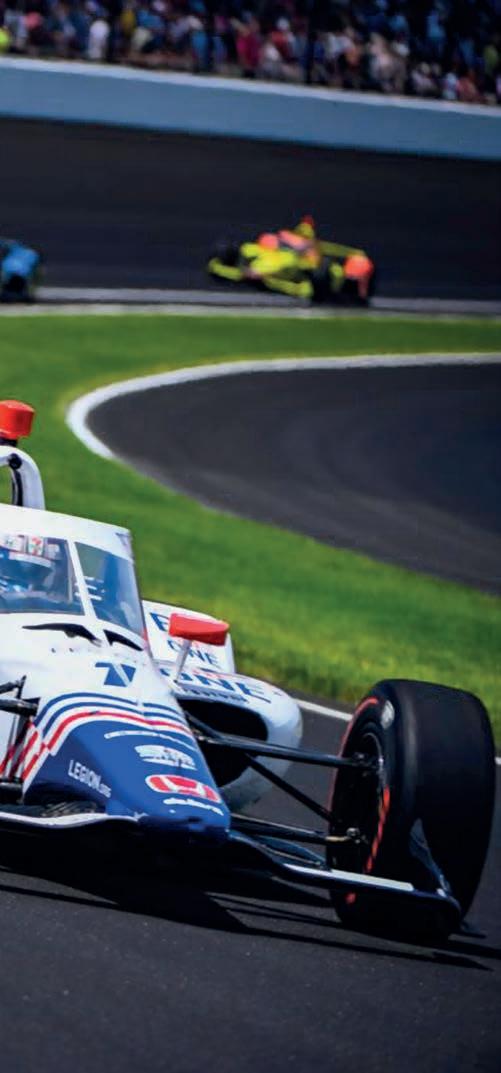
Simulation in today’s IndyCar predominantly means the use of computing power to perform CFD and vehicle dynamics studies. Since IndyCar only began using this technology in anger relatively recently, technology transfer is particularly prominent.
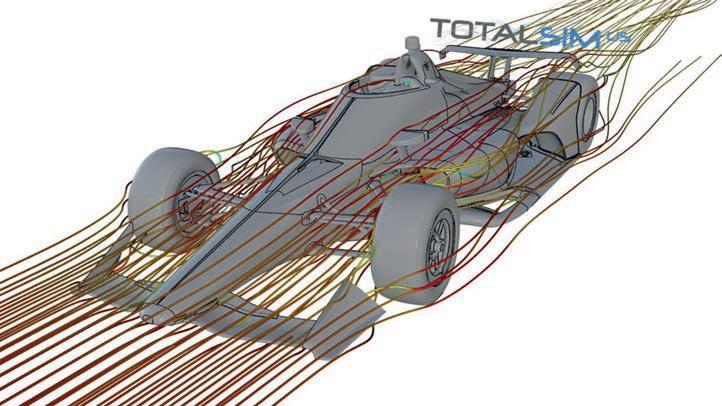
With so much reliance on digital innovation, it’s logical to look to those who are leading the field for inspiration as to how best to use it. Inevitably, this expertise comes from Formula 1, and teams like RLL Racing have appointed some very experienced leaders within their organisations.
Stefano Sordo, for example, moved over to IndyCar from McLaren Racing’s F1 team, where he brings his experience as director of vehicle performance, and two decades of racing in F1, to serve as RLL’s technical director. He is well acquainted with the directions simulation technology can take the sport, and the methodology required to maximise its use.
Incremental gains
However, where once there were relatively large gains to be had simply from running a basic simulation, with more time spent developing the cars to an ever-tighter set of regulations, the increments of performance gain have become increasingly smaller for a given engineering effort.
Today, the atmosphere is such that the fidelity of physical understanding required to make meaningful advancements is placing new demands on both the technology and our understanding of the physics behind it.
‘Understanding the car aerodynamically was my first task when I arrived here,’ recalls Sordo. ‘We needed to understand how to efficiently manipulate the mechanical set-up of the car to maximise our aerodynamic performance through thorough physical measurement, CFD and wind tunnel work.
‘Once we have the data from this testing, part of the exercise is wind tunnel and CFD correlation, so we can understand how this data matches data from the track and can use them as reliable tools.’
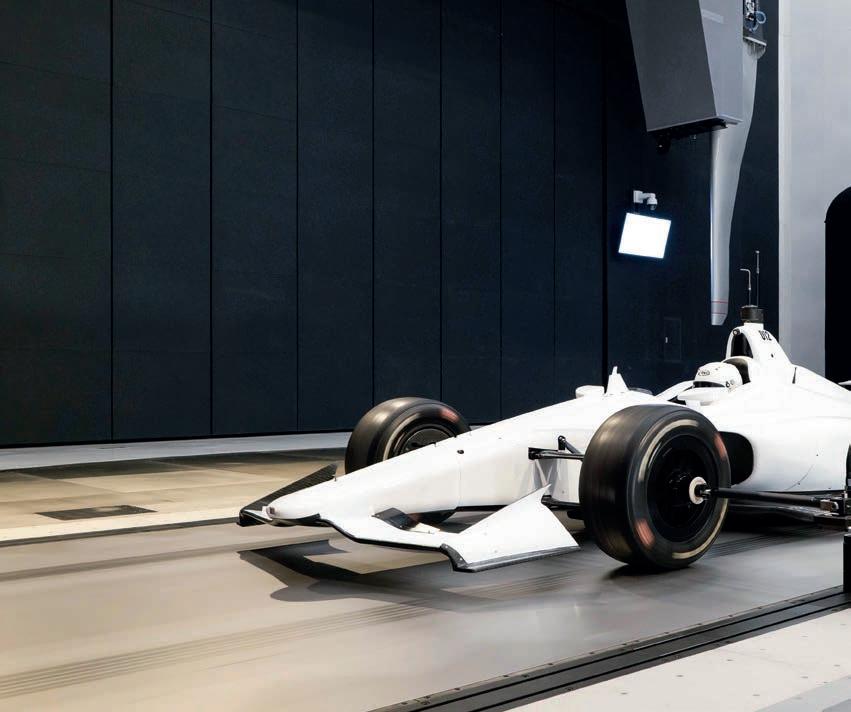
Logical process dictates that the task of the highest importance in any performance development process is to understand what is happening to the car in the real world first and foremost. Any off-track development efforts must ultimately support that.
‘In 2009, when we started doing CFD for Indy at TotalSIM, it was about getting information that we couldn’t get elsewhere,’ notes Ray Leto, former technical director and president of TotalSIM, who supplies teams in the championship with aerodynamics expertise. ‘It was adding to the wind tunnel activities and, while we weren’t trying to correlate strongly between them at that time, we were trying to better understand flow structures around the car.
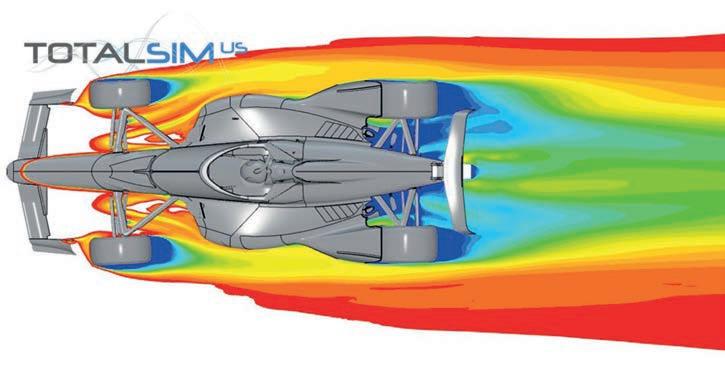
‘The wind tunnel gave us numbers but didn’t really allow us to understand what was going on, which is where CFD came in.’
Confidence in correlation
Typically, the wind tunnel enables engineers to understand the forces and moments generated around a vehicle in a reliable and representative way by measuring lift and drag performance numbers. It doesn’t say a great deal about the flow structures around the vehicle, though, which makes correlation between track and tunnel a more difficult task. This is one of the merits of CFD, which simulates the flow field around the body.
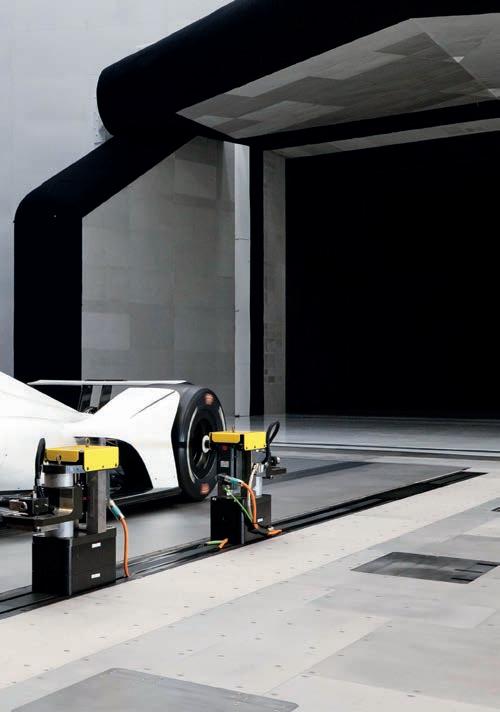
‘The simulations only give you as much confidence as the data you feed them with, so this goes back to needing a better, higher fidelity understanding of the car to feed into the simulation,’ adds Sordo.
‘It was pretty clear immediately that there was not enough instrumentation to understand the car on the physical track, so we have some tests in which we are going to make use of a full suite of aero instrumentation.’
The value in measuring pressure around the body with pressure tapping as it runs in the real world and in the wind tunnel is that it allows engineers to create a map of air pressure around the vehicle. This gives insight into areas of good flow attachment and separation, as well as vortices and other flow phenomena.
Crucially, it also records the magnitudes of the high and low-pressure zones around the wings, underbody and vehicle body. If the pressure coefficients look identical between the real data, wind tunnel data and CFD data, the mission is a success.
As you might imagine, though, this is rarely the case in real life.
‘One of the things I’m doing here is to start using CFD methodologies as a tool to understand the car with a consistent and methodical approach. We are really aiming just to advance our understanding from trackside, not only to know what is happening on the real car at the track, but also to understand where our wind tunnel and CFD data are accurate, and where the are not,’ explains Sordo.
Restricted space
IndyCar is a spec series, which means that all teams have to work with the same aero kit, but there are still advantages to be found within this restricted engineering space, so a sound aerodynamic understanding is no less valuable.
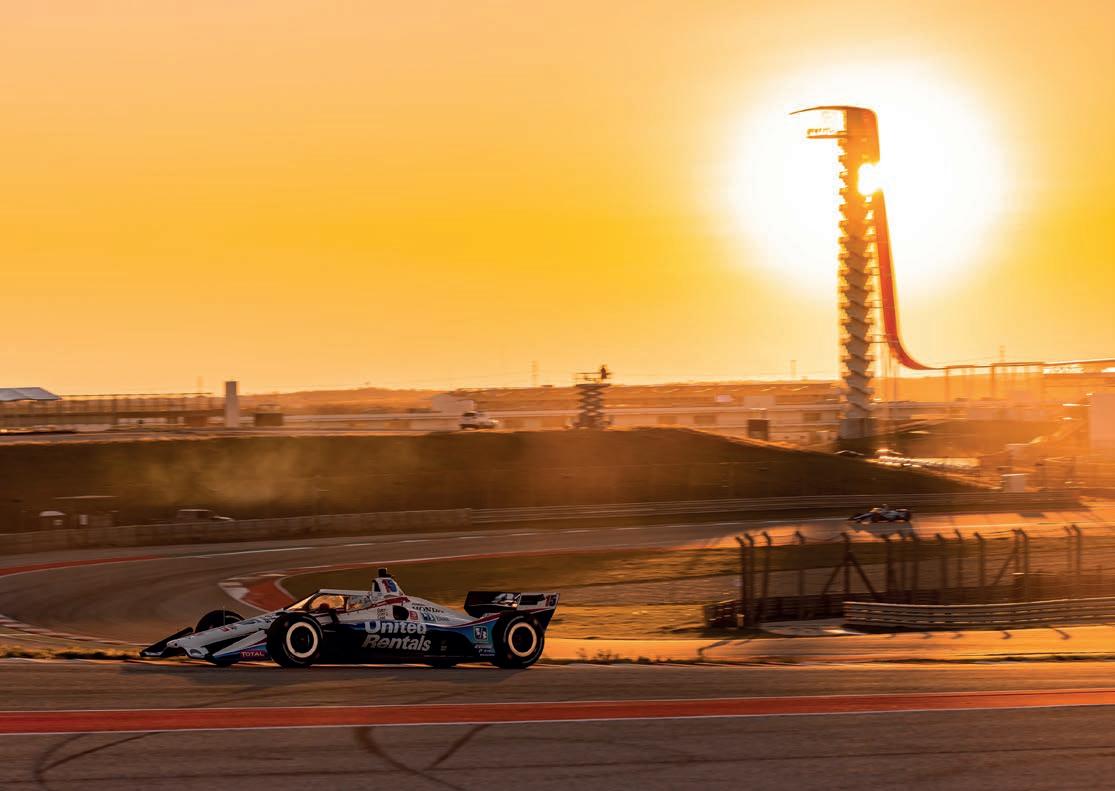
‘We are somewhat limited to influencing mechanical set-up through understanding where we want to place the car within the aero map for a given event,’ continues Sordo. ‘There are many things that can be done on speedways, and to a lesser extent road courses. We have minimum and maximum tolerances around the nominal surfaces we are permitted to be within, so there is still scope to understand good and bad directions.’
‘At places like Indianapolis, for example, where you are power limited, small aero changes make a huge difference,’ confirms Leto. ‘At those speeds, five counts of CdA are worth 0.5mph, which is a lot of positions on the grid. Those increments are difficult to measure, even in a controlled environment like the wind tunnel.

‘You can get repeatability and confidence windows, which allow you to make choices at that level, but it is not a trivial exercise. The instrumentation and preparations required are extensive, but this is the level of fidelity we work at in IndyCar today.’
Alas, aerodynamics is only one part of the IndyCar technological revolution. The aerodynamic platform must also interact with the vehicle chassis, and this segues nicely into the subject of vehicle dynamics.
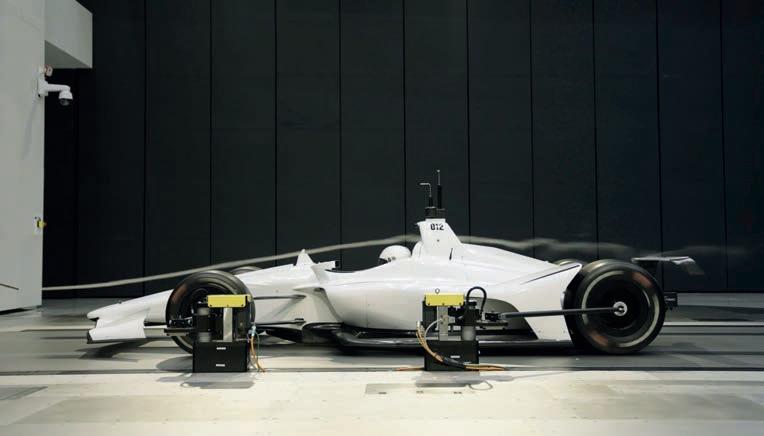
Simulation in this area in IndyCar has been making its own leaps and bounds, perhaps even more so than aerodynamics.
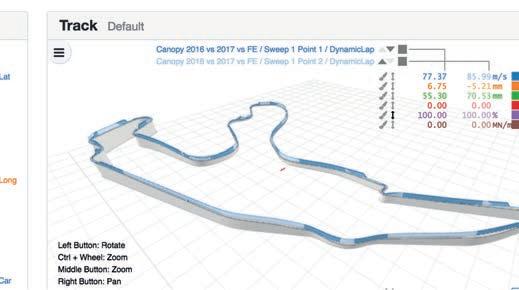
An integral part of performance development is vehicle dynamics simulations. This began as simple ‘offline’ simulations, a term used today to describe lap time simulation done on office-based machines.
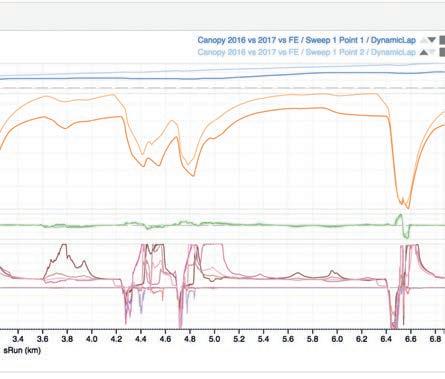
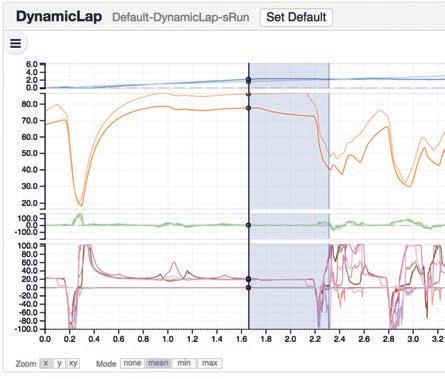
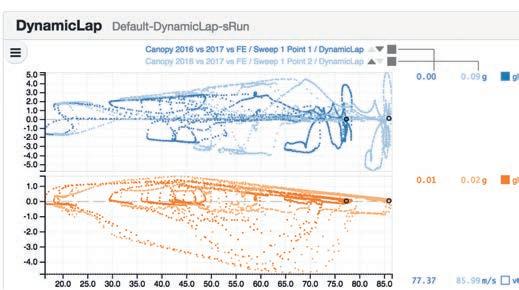
Dynamic simulation
The key benefit of offline models is simple: they allow engineers to run through many different iterations of vehicle configurations with much faster turnaround and lower cost than you ever could with track testing.
Running through 1000 different set-ups may take one evening of computing time, but you can imagine how long that would take on track. To perform any vehicle dynamics simulation, the first task is to create a digital twin of the car, which requires a very good understanding of the physical vehicle.
With certain characteristics such as kinematics, wheelbase and weights, this is a straightforward task, but moving into the realm of damper models, chassis compliances, tyre models and creating
For
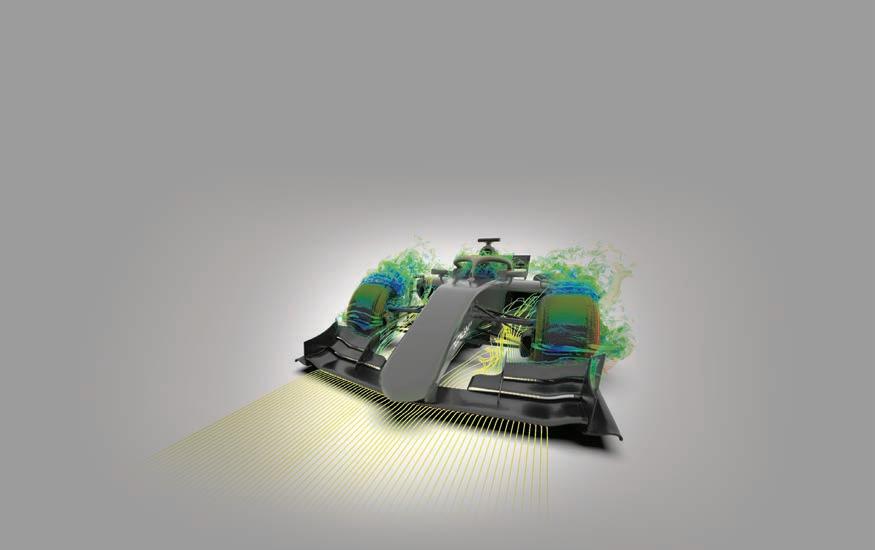

Materials accurate representations of other non-linear parameters, the difficulty is another level up.
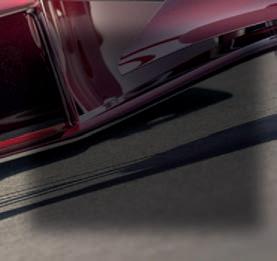
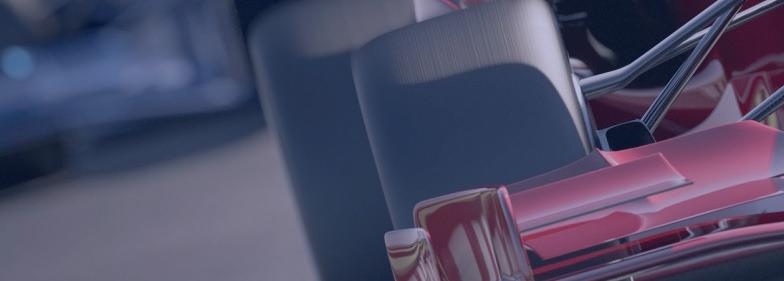
‘We are doing some testing on the K&C rig soon to understand how the compliances of the car are distributed,’ notes Sordo. ‘Tyre testing is particularly tricky, because IndyCar forbids a slip angle sensor on the car, which means we are limited in what we can understand from the tyres.
‘The tyre model is the most challenging aspect of this development.’
All IndyCar teams are given a tyre model by Firestone based on the Pacejka formula, but that digital representation omits many salient, physically-based parameters such as the effect of temperature and degradation on their attributes. Consequently, teams are looking to develop their own models, or adapt the standard model, to give an improved representation of the tyre.
‘The methodology is to understand the car on track and then develop digital models that are a better representation of the car to feed the simulator in a more realistic way,’ Sordo confirms.
The wide variety of IndyCar circuit types presents some unique engineering challenges. Covering ovals, speedways, road courses and street circuits means setting the car up well for tracks ranging from bumpy public roads with coarse concrete to finely laid asphalt on banked ovals and open, sweeping, European-style circuits. The requirements of each track dictate an entirely different chassis and set-up approach.
Optimising performance over different wing packages, ride heights, damper rates, spring rates and kinematics therefore presents a hugely complex engineering challenge for teams, so the vehicle models need to be robust for engineers to have confidence in the simulation data and follow a certain setup direction at each race weekend.
The software used to perform offline simulations is not proprietary to individual teams, as in some other series, which means the creators of such software can reference the fidelity of vehicle models in IndyCar relative to a spectrum of other championships.
‘There’s plenty of times IndyCar has pushed us to develop new technology that’s ultimately been used elsewhere,’ notes Jon Mullen, software developer at Canopy Simulations. ‘One of the great things about working in as many series as we do is getting to see technical innovations and regulations be adopted and adapted by different series.
‘I can tell you, based on the features we’ve been asked to build, that IndyCar modelling is as rigorous as you’ll find anywhere.’
Chassis platform
The chassis platform of the IndyCar is largely conventional, using inboard springs and dampers with de-coupled heave springs in a conventional way, but IndyCar does allow the use of inerters, which are prohibited in all other high-level racing series.
Inerters have the effect of attenuating vibrations experienced by the unsprung mass introduced by inputs from the road surface. The result is a reduction in contact patch pressure variation and an increase in average grip vs traditional systems. They have a significant impact on the cars’ behaviour, so accurately capturing their effect is important.
IndyCar also permits the use of a component called the weight jacker. Fitted to the right rear spring, it allows drivers and engineers to shift weight around the contact patches by lengthening or shortening that corner’s spring/damper unit to alter the corner ride height, and therefore centre of mass positioning. It also has the secondary effect of placing the car in a different position of its aero map to influence the centre of pressure and drag.
This is another important interaction, which can only be captured effectively with sophisticated and accurate vehicle models.
‘The funny thing about the weight jacker is that it was more difficult to make realistic in practice than it was to model its physics,’ says Mullen. ‘Our optimisation wants to adjust it mid-corner – which is a little much to ask of a driver – but we managed to make it realistic and useful to teams.
‘Teams tend to focus effort on modelling the components they think their car is most sensitive to, and then exploit places where they’re given freedom by the regulations.
‘IndyCar is a unique sport, so we see technical innovation focussed in unique ways.’
These interactions between complex suspension systems can cause real challenges without a solid methodology and database to approach simulation with.
‘We’ve been doing this long enough to understand how to drive engineering in that sense,’ says Nault, ‘but the developments in simulation technology have for sure helped us to be more organised, and to understand how what we learn at one style of track will transfer over to another.
DiL simulators used by IndyCar teams represent all the important inputs to allow drivers to interact with the vehicle dynamics software
‘Because the wing package and damper requirements are so different, it’s largely a different car from one track to the next, and the set-up approach is so different, but simulations have helped massively.
‘The databases we now have make it easier for engineers to focus on things that will help effect change to make the cars faster.’
Driver input
Offline simulations have undoubtedly allowed teams in IndyCar to make large steps forward to understand their cars better, and have provided part of the solution to the lack of physical track testing opportunities in the championship. But there is a second, logical evolution to vehicle dynamics simulation, which is emerging as an even more powerful tool.
Driver in Loop (DiL) simulators follow on from offline simulations to provide a physical environment for the driver to interact with the digital vehicle model through standard controls – steering wheel and pedals. This immediately overcomes several limitations of the offline simulation.

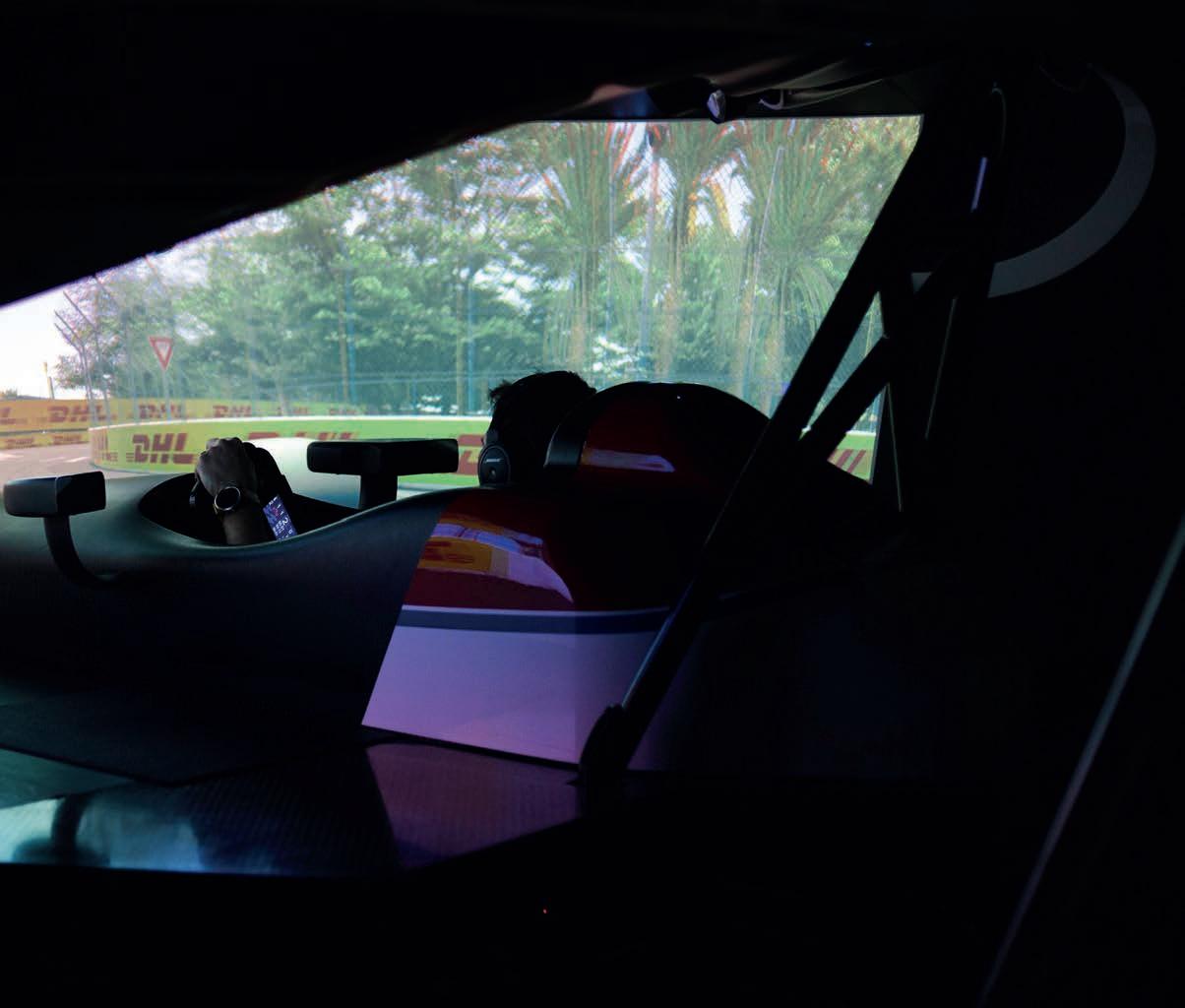
Firstly, it’s not straightforward to obtain meaningful data on subjective parameters, such as the driver’s experience of vehicle stability, from offline simulations. Offline simulations also assume the driver will take the mathematically optimal trajectory around a circuit, when in reality features such as bumps, cambers and curves can make this a slower way around. There’s also no accommodation for traffic, and how that alters the driver’s inputs.
The engineering process is to use offline simulations to narrow down a window of possible set-ups, and then send those over to the DiL, where the driver can be involved in deciding the set-up direction they are most comfortable with. It’s the output from the DiL, which is then run through at the track in practice sessions to arrive at optimal qualifying and race set-ups.
That said, simulator time is also limited in IndyCar, and teams are restricted to 12 days per season, compared to Formula 1 where teams can be in the simulator three or four days a week, all year round. Care must therefore be taken to make the best use of the available time, especially as teams currently do not have in-house rigs, instead relying on those at series suppliers such as Honda and Chevrolet.
With effective execution of vehicle dynamics simulation, the race weekend becomes an easier process.
‘With better management of resources, it’s probably fair to say we have reduced the complexity of a race weekend. Through the progress we have made in simulation, it becomes an easier task to evolve the set-up over a weekend,’ confirms Sordo
Exciting opportunity
To maximise the benefit of using these technologies, teams also need to be restructured to put the right personnel in the right places, which means bringing in experienced engineering resource in the important new development areas such as tyres, aero and CFD methodology, something RLL Racing identifies as an exciting opportunity for engineers.
‘In contrast to F1, where you can be a tiny cog in a huge wheel, you can effect more change in IndyCar,’ says Nault. ‘The real racers are interested in having a larger part in the car’s development. Our team, for example, which is split across IndyCar and IMSA, is running five cars full time with only around 120 people, so we are still relatively small.’
So, where is IndyCar headed? It’s certainly an exciting time to be in the sport as it develops and adapts to current technologies. And while this is a journey rather than a destination, the continued emergence and development of technologies can provide insight into what the sport may look like in the next five years.
The introduction of hybrid powertrains will undoubtedly be another turning point in the series, and while regulations on its integration into the racing are yet to be crystalised and communicated, information is starting to trickle down to teams, and thoughts on how best to use it are already progressing.
‘Next year, our IndyCar team will be running KERS, so it’s going to be very interesting to learn and to understand how to deploy the assistance and regen’,’ says Nault. ‘We aren’t entirely sure what level of engineering support the regulations will allow, but it seems like we won’t be allowed to programme the deployment and regen’ and that it’ll rely solely on the drivers.’
Again, this is in contrast to Formula 1, Formula E and the World Endurance Championship, which all feature programmable deployment and regen’ strategies to suit the track, driver and phase of the race. Giving the driver more opportunity to get it wrong, or right, is almost certain to produce some great racing.
Machine learning
Artificial intelligence and, more specifically, machine learning is another rapidly developing technology across all industries these days, and motorsport is no different.
The vast array of sensor data recorded by these cars over a race weekend is useless unless it can be utilised to drive decisions within the team. Analysing data is a timeconsuming task and, not only that, you have to know what you’re looking for.
Machine learning techniques have the potential to allow vast amounts of data to be processed, and trends and patterns identified, in order to generate meaningful conclusions in an efficient way. The technology is in its infancy in IndyCar, but in F1, where RLL’s technical director has professional experience, it’s more developed.
‘In F1, AI has become increasingly important in various areas, but mainly in aerodynamic testing where, for example, it can reduce the post-processing time of CFD results,’ explains Sordo. ‘We’ll use this technique to further our understanding of the car, but it’s more of a long-term plan. An area I think AI can also be useful in is linking sector time data to performance sensitivity of the car based on what we have learnt in testing. This is a clear path forward I think.’
Given that IndyCar circuits have lots of sectors, up to 10 in some, this provides good references to identify correlations between the circuit features within each sector and aerodynamic configurations.
While the computing power available for simulations is increasing exponentially, new opportunities and complexities within simulation can be realised. Capability with CFD is especially interesting in this respect, particularly in what is possible for the simulation of airflow across multiple cars running in close proximity.
‘We’ve been doing more and more traffic studies and multi-car simulations of late,’ says Leto. ‘There are a lot of ways to do that, but we’ve developed quite a nice process in IndyCar and NASCAR.
‘In traffic at speedways, for example, the interactions between the cars at those high speeds are more important than the individual car aerodynamics, and drafting is so important, so being able to look at a free air car and a car in traffic is key.’
These developments in capabilities also allow studies to be done on the aerodynamic interactions between the car and the wall when it’s running close to itanother feature that sets IndyCar apart from other open-wheel series. Not only do these allow an aerodynamic understanding of the flow in these conditions but, along with the data gained from traffic simulations, this can be fed into the DiL to give drivers a much more realistic vehicle model.
It’s a safe bet to say IndyCar will have progressed a long way in the coming years, and the gap between it and its racing cousins in F1 will continue to decrease.
